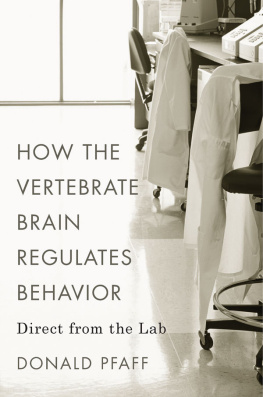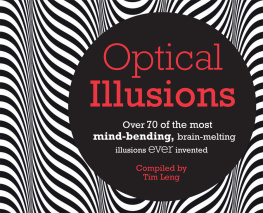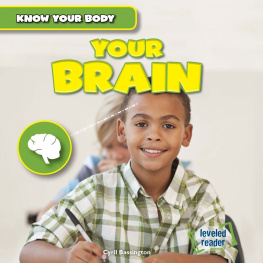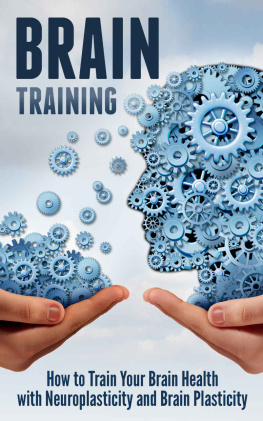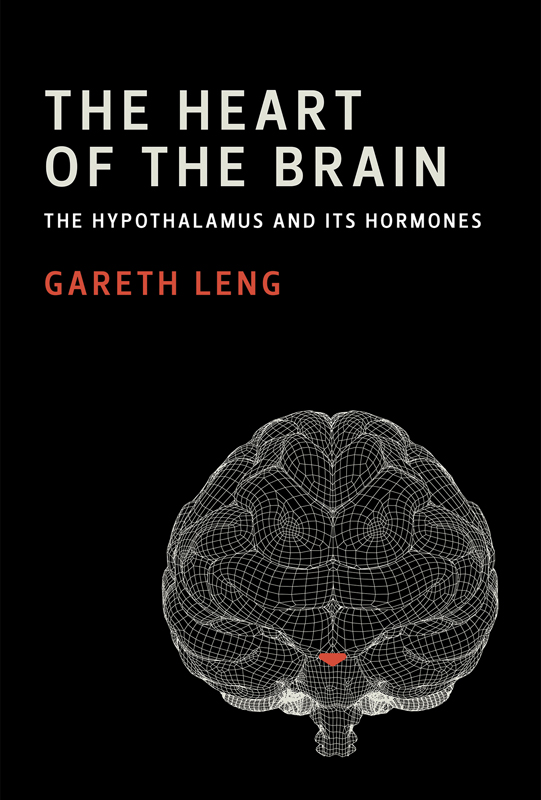Contents
Guide
Pagebreaks of the print version
The Heart of the Brain
The Hypothalamus and Its Hormones
Gareth Leng
The MIT Press
Cambridge, Massachusetts
London, England
2018 Massachusetts Institute of Technology
All rights reserved. No part of this book may be reproduced in any form by any electronic or mechanical means (including photocopying, recording, or information storage and retrieval) without permission in writing from the publisher.
This book was set in Stone Serif by Westchester Publishing Services. Printed and bound in the United States of America.
Library of Congress Cataloging-in-Publication Data
Names: Leng, G. (Gareth), author.
Title: The heart of the brain : the hypothalamus and its hormones / Gareth Leng.
Description: Cambridge, MA : The MIT Press, [2018] | Includes bibliographical references and index.
Identifiers: LCCN 2017047175 | ISBN 9780262038058 (hardcover : alk. paper)
Subjects: LCSH: Hypothalamus--Popular works. | Hypothalamic hormones--Popular works.
Classification: LCC QP383.7 .L46 2018 | DDC 573.4/59--dc23 LC record available at https://lccn.loc.gov/2017047175
For Arnaud, Trystan, Rhodri, and Owain, and for Nancy
Contents
List of Illustrations
The classical neuron.
Generating spikes. Neurons are electrically polarizedat rest, the electrical potential inside a neuron is about 6070 mV negative with respect to the outside. Neurotransmitters disturb this state by opening ion channels in the membrane, allowing brief currents to flow into or out of the neuron. The inhibitory transmitter GABA opens chloride channelsthese cause negatively charged chloride ions to enter the cell (chloride is much more abundant in the extracellular fluid), and this current hyperpolarizes the neuron, causing an IPSP (an inhibitory postsynaptic potential). Conversely, the excitatory neurotransmitter glutamate causes sodium channels to open, and this causes the positively charged sodium ions to enter the neuron, depolarizing it and causing an EPSP (an excitatory postsynaptic potential). If a flurry of EPSPs causes a depolarization that exceeds the neurons spike threshold, the neuron will fire a spike (an action potential). After a spike, neurons are typically inexcitable for a period because of a short hyperpolarizing afterpotential, and this limits how fast a neuron can fire. Trains of spikes can cause complex long-lasting changes in excitabilitydepolarizing afterpotentials or hyperpolarizing afterpotentials and combinations of these. These cause neurons to discharge in particular patterns of spikes. These properties vary considerably between different neuronal types.
The neuroendocrine systems of the hypothalamus. The anterior pituitary contains endocrine cells that produce six major hormones. The secretion of these hormones is controlled by hypothalamic hormones released by small populations of neurons in different regions of the hypothalamus. LH and FSH secretion is controlled by GnRH from neurons in the rostral hypothalamus; growth hormone secretion by GHRH from the arcuate nucleus and by somatostatin from the periventricular nucleus; prolactin secretion by dopamine from the arcuate nucleus; TSH secretion by TRH from the paraventricular nucleus; and ACTH secretion by CRF, also from the paraventricular nucleus. The posterior pituitary contains no endocrine cells: here, the two hormones oxytocin and vasopressin are secreted from the axonal endings of magnocellular neurons of the supraoptic and paraventricular nuclei. Between the posterior and anterior lobes is the intermediate lobe (not shown here). It contains cells that produce MSH, and these are directly innervated by another population of dopamine cells in the arcuate nucleus.
The milk-ejection reflex, uncovered by Wakerley and Lincoln using electrophysiological studies in anesthetized rats. In response to suckling, oxytocin cells discharge intermittently in brief synchronized bursts that evoke secretion of pulses of oxytocin, and these pulses induce abrupt episodes of milk letdown, reflected by increases in intramammary pressure. This reflex is dramatically potentiated by injections of very small amounts of oxytocin into the brain. This was the first clear demonstration that peptides, released centrally, can have potent physiological actions.
Self-priming. In gonadotrophs, LH and FSH are packaged in large dense-core vesicles. (a) shows an electron microscope image of these vesicles, which appear as small, dense, spherical objects that are scattered throughout the cell. (b) shows a reconstructed cross section of a gonadotroph, showing the nucleus (N) and the endoplasmic reticulum. In a proestrus rat, exposure of the pituitary to GnRH causes an increase in intracellular calcium that comes from the stores in the endoplasmic reticulum. This causes some LH to be secreted, but it also causes the remaining vesicles to be trafficked to sites close to the cell membrane. (c) shows the appearance of such a gonadotroph, and (d) shows a schematic reconstruction of the whole gonadotroph. Now, more of the vesicles are available to be released, so when a second GnRH challenge is given, much more LH is secreted. The graph (e) shows the resulting secretion. Redrawn from Scullion et al.
Priming in oxytocin neurons.
Kisspeptin and the GnRH neuron. The insets illustrating pulsatile secretion of GnRH and LH on the left and surge secretion on the right are adapted from published work of Sue Moenter, Alain Caraty, Alain Locatelli, and Fred Karsch, showing that GnRH secretion leading up to ovulation in the ewe is dynamic, beginning with slow pulses during the luteal phase, progressing to higher frequency pulses during the follicular phase and invariably culminating in a robust surge of GnRH.
Phasic firing in vasopressin neurons. Magnocellular vasopressin neurons secrete vasopressin into the blood from the swellings and nerve endings of axons in the posterior pituitary gland. This secretion is governed by the spike activity of the neurons. The spike activity can be monitored by a microelectrode whose tip is placed either inside a vasopressin cell (intracellular recording) or just outside the cell (extracellular recording). These neurons discharge spikes in long bursts of activity separated by long silences. Intracellular recordings made in vitro have revealed the mechanisms underlying these bursts, and one early key observation, shown here, is that the bursts of spikes ride upon a plateau of depolarization that is the result of a depolarizing afterpotential. The mechanisms have been reconstructed in computational models of vasopressin cells, and the traces on the left are simulations of the activity of a vasopressin neuron in response to increasing osmotic stimulation. The graph on the right shows measurements of vasopressin in rat blood, and it shows how the vasopressin concentration is linearly related to the plasma osmotic pressure.
Bistability. Bistability in neurons can arise from a positive feedback mechanism that saturates: spike activity in vasopressin cells produces a depolarizing afterpotential that increases neuronal excitability, but its effect saturates because short hyperpolarizing afterpotentials after each spike limit how fast the neuron can fire. Bistable oscillations arise because of a slower activity-dependent inhibitionthe afterhyperpolarization. This can be mimicked by two differential equations challenged by a noisy input mimicking synaptic input. Here,


